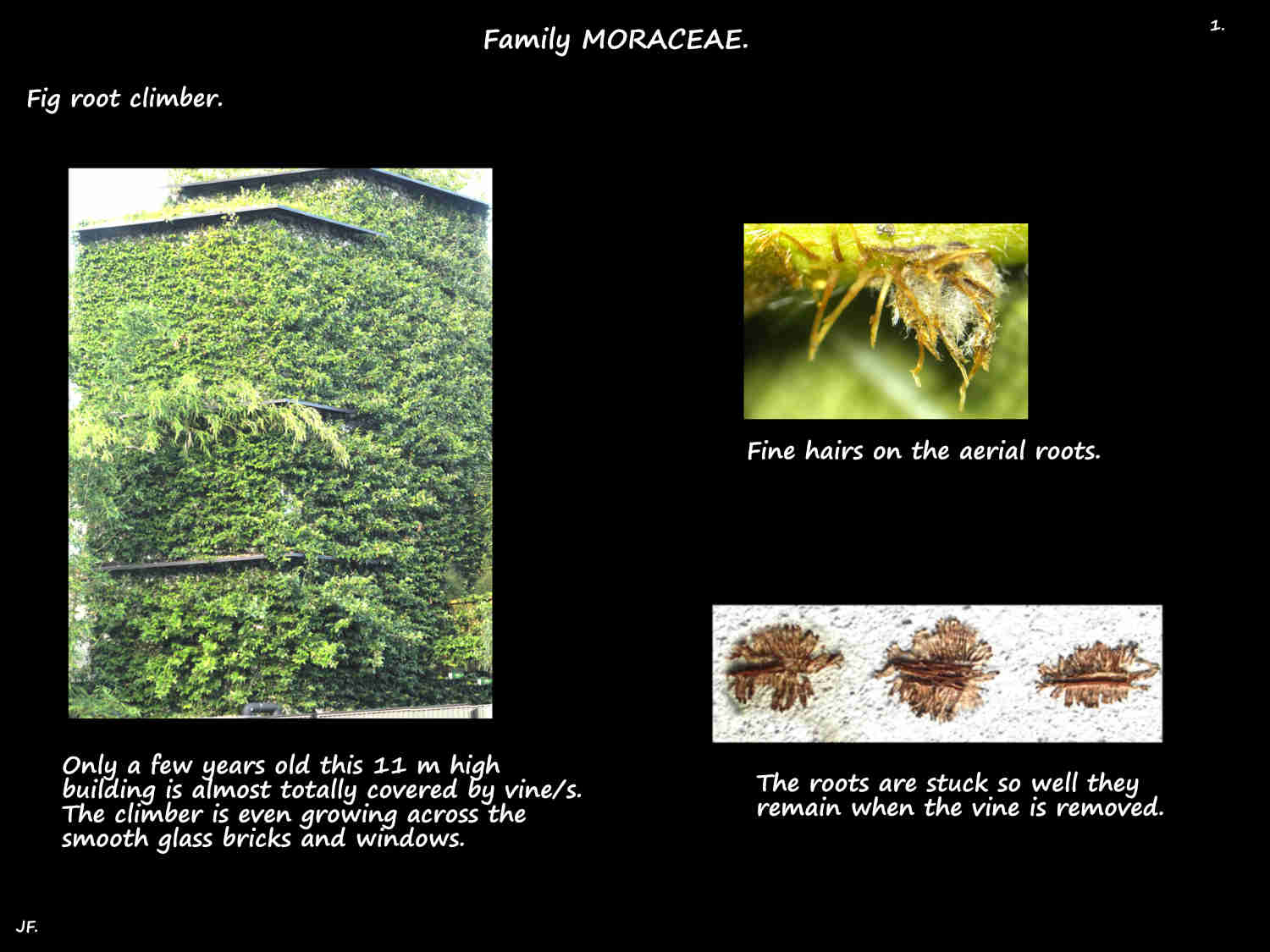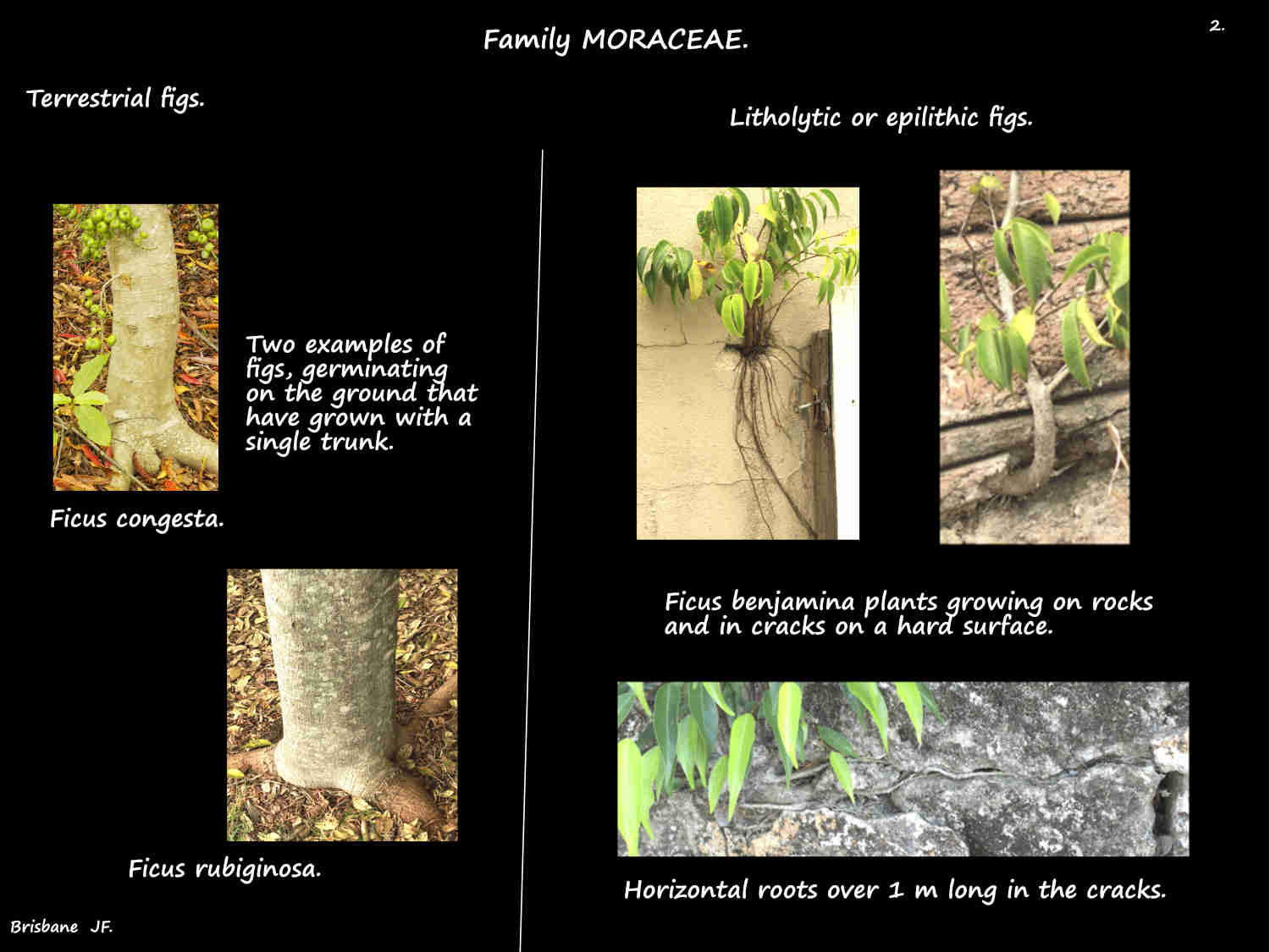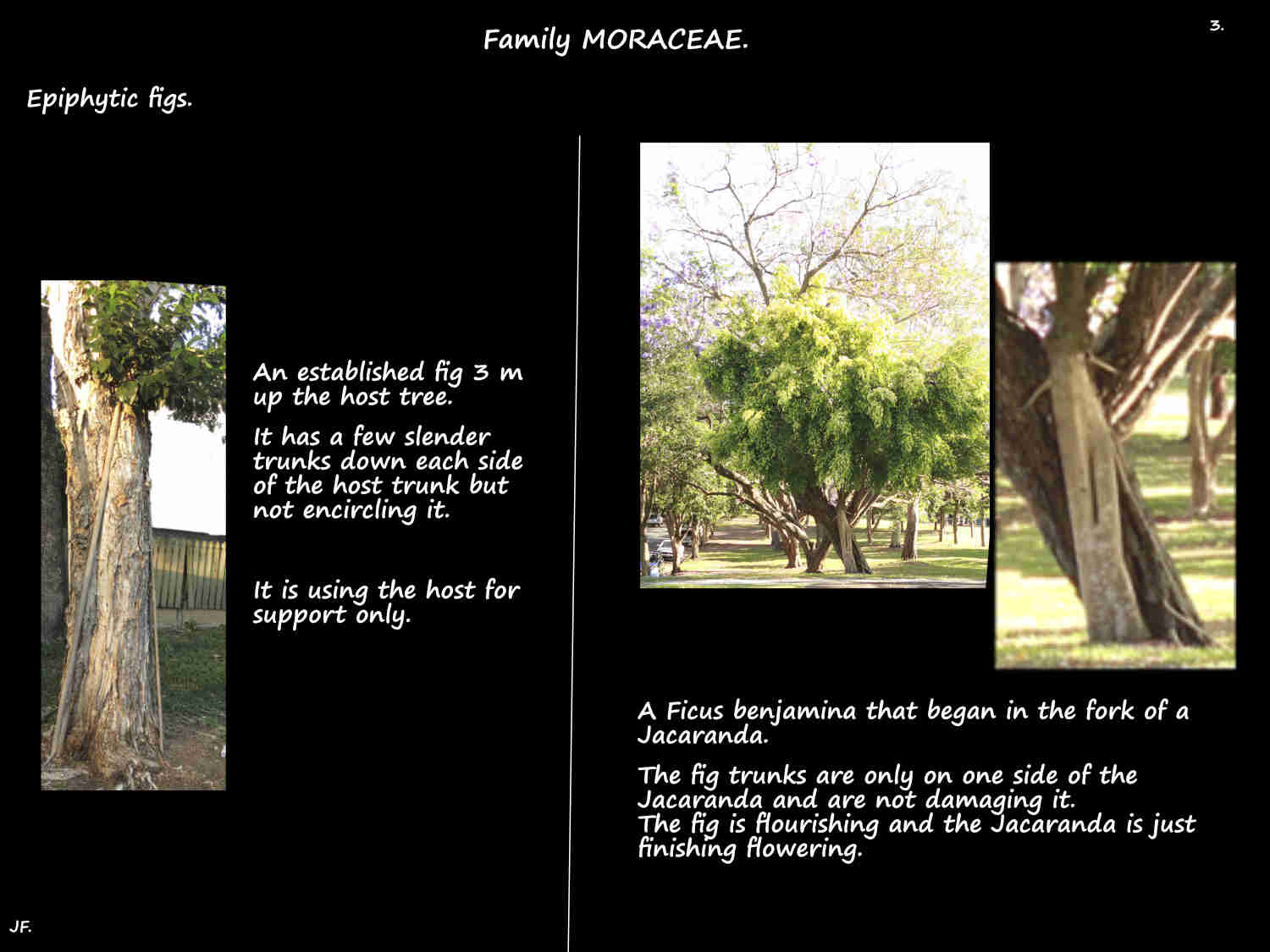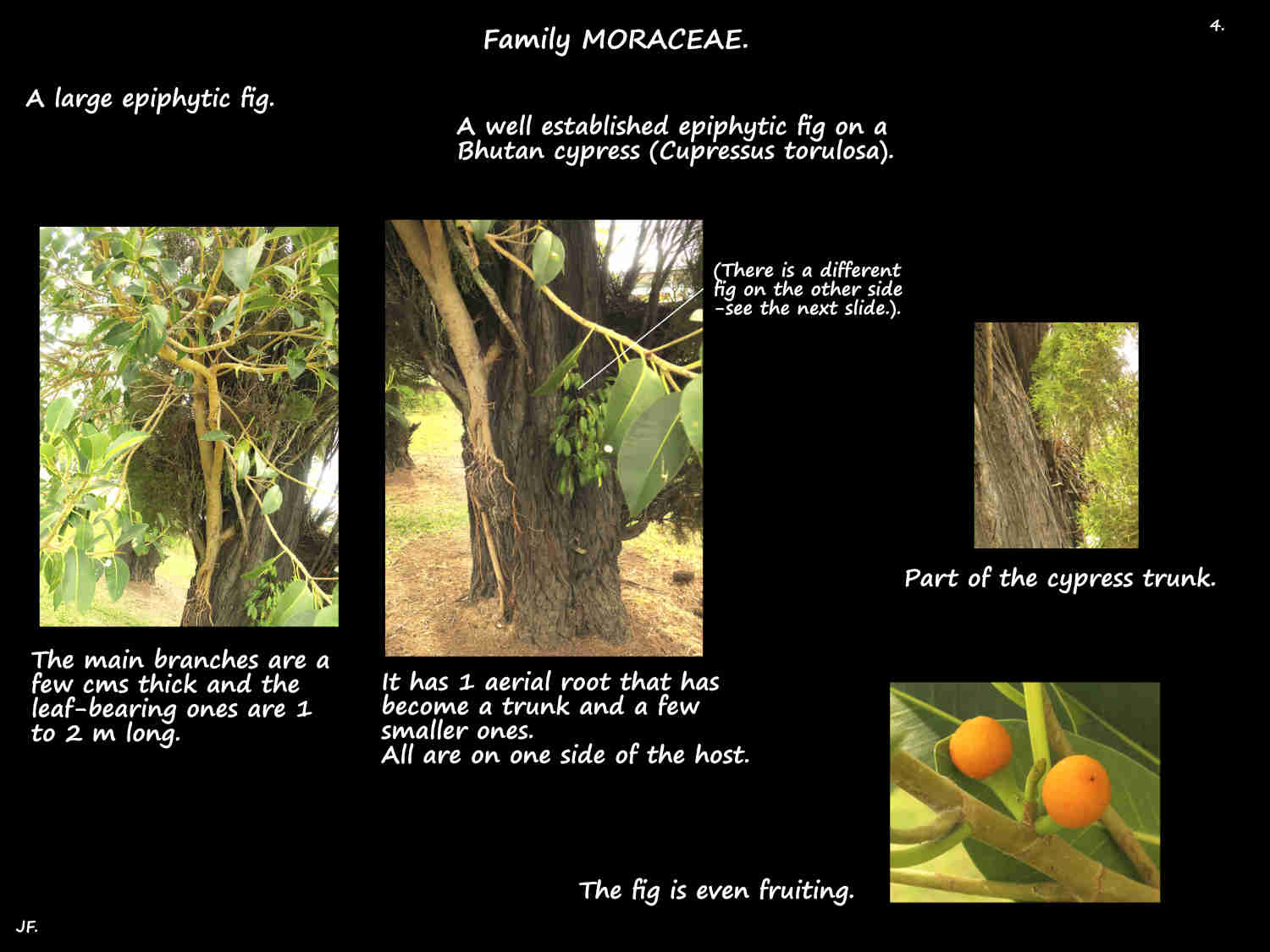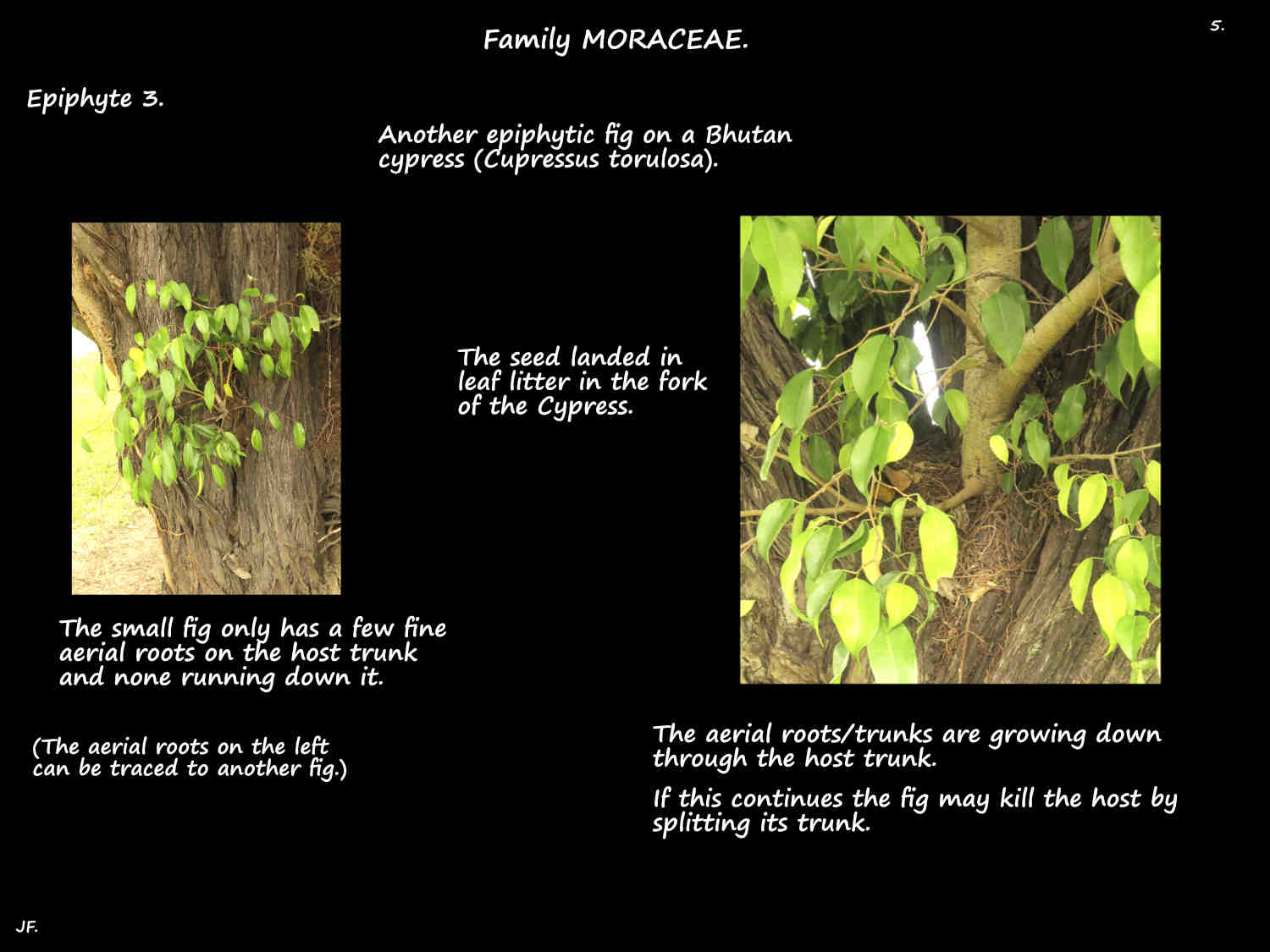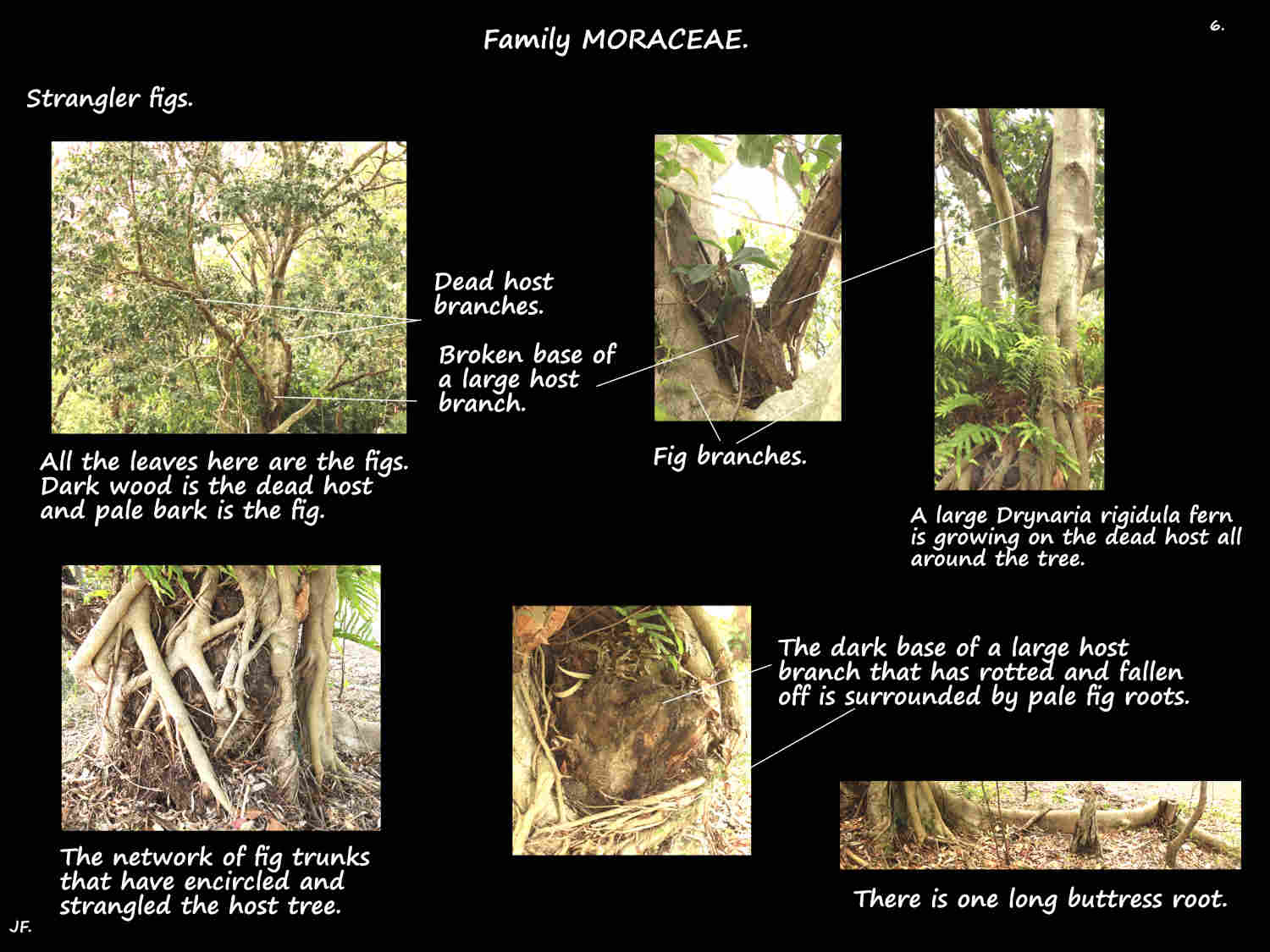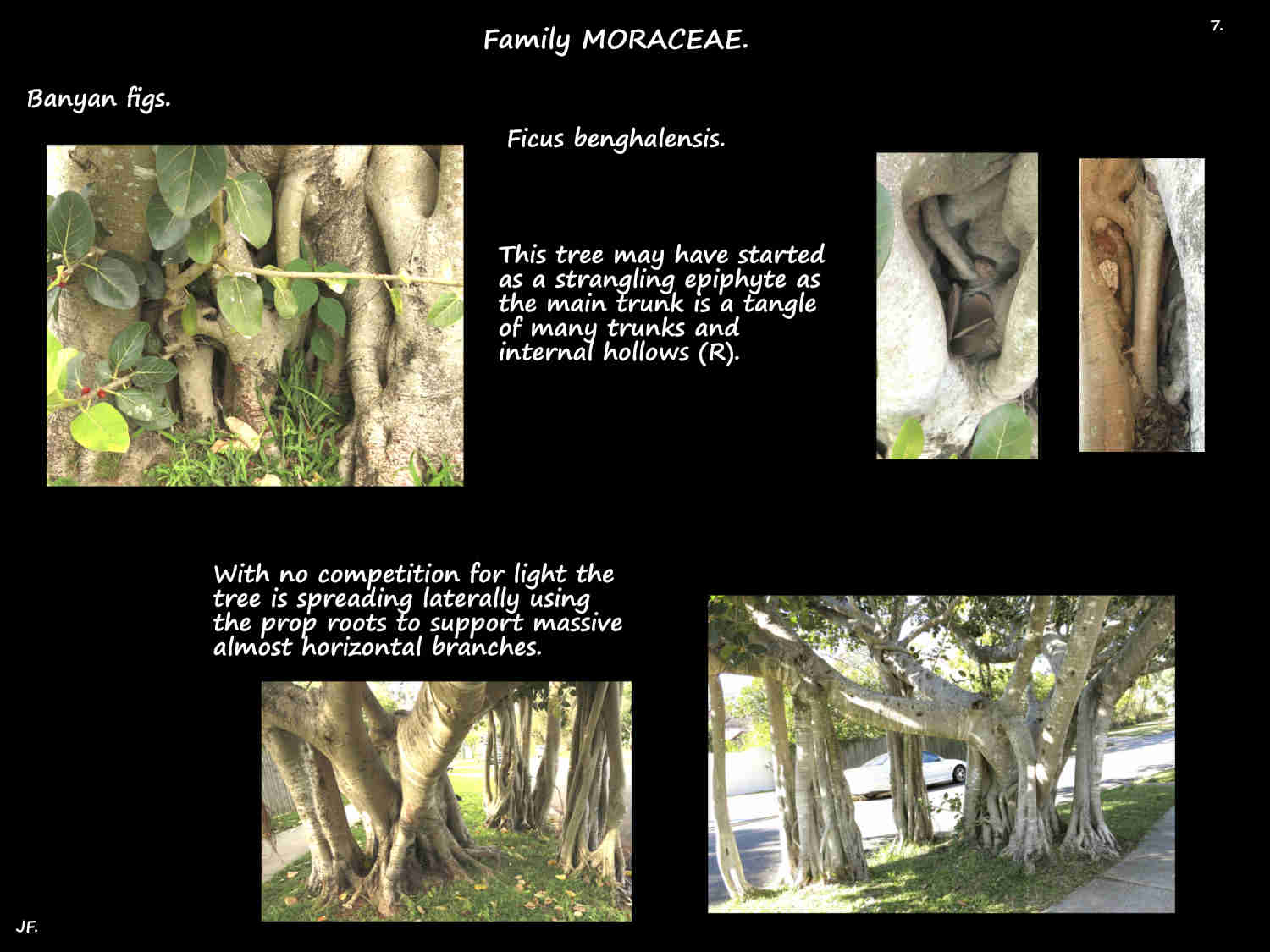Fig growth forms.
Fig root climbers.
Ficus pumila is the only one seen here.
It is an aggressive climber using adventitious roots on the stems and a glue to attach to almost any vertical surface.
Terrestrial figs.
Seeds of these figs germinate in the soil.
Many species only ever have a single trunk but others can become banyans.
Epiphytic figs.
These are figs that grow on another plant but do not derive nourishment from it.
Their seeds germinate in the leaf litter in the forks of other trees.
The sprouting fig sends leafy shoots up towards the light and aerial roots grow down the sides of the host tree then
root and become trunks.
They usually continue to co-exist with the host tree and do not damage it but may help support it.
The fig may occasionally kill the host when its roots grow into the host trunk and split it.
Strangler figs.
These commonly start as an epiphyte with multiple aerial roots that, on reaching the ground root and thicken into trunks.
The trunks fuse forming a network around the host trunk that gradually strangles and kills it.
When the host trunk has rotted away a hollow is left in the centre of the now self-supporting fig.
Strangler figs seen in Australia include Ficus benghalensis, Ficus macrophylla, Ficus obliqua, Ficus virens and Ficus watkinsiana.
Lithophytic or epilithic figs.
These grow on rocks or similar hard surfaces.
Banyans.
These are fig trees that have many secondary or prop trunks that develop from aerial roots growing down from the branches.
The prop trunks support the large almost horizontal branches allowing them to continue growing laterally.
The tree can extend out in all directions forming groves with hundreds of prop trunks and a canpoy covering hectares.
Ficus benghalensis was the original banyan but the term now covers others such as Ficus benjamina, Ficus microcarpa and Ficus virens.
These descriptions are not exclusive as one fig species may fit into more than one of the above.
For example one species could grow as a terrestrial, lithophytic, strangling or banyan fig.
J.F.
